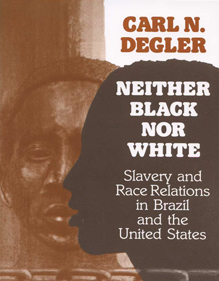Mixed-Race Identity in a Nineteenth-Century Family: The Schoolcrafts of Sault Ste. Marie, 1824-27
Michigan Historical Review
Volume 25, Number 1 (Spring, 1999)
pages 1-23
Jeremy Mumford, Visiting Assistant Professor of History
Brown University
In the autumn of 1824 the Schoolcraft family set out from Sault Ste. Marie, at the mouth of Lake Superior in northern Michigan Territory, to visit New York City. For Jane, who had seldom left the remote village where she was born, this was her first visit. It was the first time Henry had returned to his home state since his appointment as federal Indian Agent in Sault Ste. Marie in 1822 and his marriage a year later. And everything was new, of course, for their son Willy who was only four months old.
The Schoolcrafts were apprehensive about the reception they would meet in the metropolis. Jane was the daughter of Oshauguscodaywayqua, a Chippewa woman from an influential lakeshore family, and John Johnston, an Irish gentleman and fur trader. In the language of her time, both Jane and her child were half-breeds. To her relief, Jane and Willy received only friendly attention on this visit. When Henry left to do some business in Washington, some friends, Mr. and Mrs. Conant, invited Jane to leave her lodging house and stay with them. She wrote to Henry of repeated visits, interesting conversation, and “marked kindness” from many acquaintances. The strongest impression the Schoolcrafts took away from their visit was of kindly interest in Jane and Willy, who were received as “another Pocahontas” and her “bright American boy.”
In making a family excursion to the great eastern city, the Schoolcrafts signaled ambitions within a wider arena beyond their village. One purpose of the visit was to discuss a book of Indian oratory on which Henry intended to collaborate with Samuel Conant and in which Jane may have been involved. The other was to improve Henry’s political contacts in Washington. Henry was ambitious for both literary and political fame, as well as for the prospects of his first child, William Henry Schoolcraft, the bright American boy.
For both parents, their sojourn in the East prompted reflection on their responsibilities and their future. Sick in bed, Jane wrote from New York to Henry in Washington that she was unused to being separated from him and missed him. He wrote to her of his prayer that their “sweet, interesting little boy [would] be permitted to grow up to man’s estate, and that his mother may be spared to nurture him up.” He mused: “What an interesting chain of thought is connected with the idea of a home, and a wife, and a child.”
Inevitably, this chain of thought had to take account of the meaning of Jane’s and Willy’s mixed race. The Schoolcrafts were starting their family in the shadow of a very different model of family-building: what was called in the upper Great Lakes la facon du pays or “the custom of the country.” Traditionally, white men lived with and had children by Indian or mixed-blood women, only to leave their families behind when they returned east, entrusting them to other men’s protection or abandoning them altogether. Jane’s parents were unusual in the permanence of their relationship, but even they did not formalize their marriage until she was twenty. In visiting the East together as a family, Jane and Henry (who were properly married by a visiting clergyman) broke the custom of the country and expressed their determination to start a family that was just as legitimate in New York as it was in Sault Ste. Marie.
They were opposing not only the custom of the country but also the direction of educated opinion. Jane’s and her children’s mixed ethnicity, while not uncommon, was a subject of increasing distrust. When Jane was three years old, President Jefferson predicted that white and Indian people would “blend together, … intermix, and become one people.” But during her lifetime Americans moved toward a harsher theory of racial boundaries. By the 1840s some scientists argued that a mixed-race person was a “hybrid” of biologically separate species, “a degenerate, unnatural offspring, doomed by nature to work out its own destruction.” During the years of Henry’s and Jane’s marriage, mixed-race families became ever more suspect.
To build a secure foundation for their family, the Schoolcrafts used whatever resources they could find. They looked hopefully to Jane’s Chippewa connections, which promised substantial support. Her dowry of 2,000 pounds (about $10,000) came from her parents’ business in Chippewa furs. She and Henry stood to enlarge it through gifts of land made by the tribe to Jane and Willy as mixed-blood Chippewa. Jane also contributed to her family’s fortunes in another way: by teaching Henry about Chippewa culture and folktales, she laid the foundation for Henry’s later fame as an writer about Indians.
This essay will trace two attempts the Schoolcrafts made, in the first years of their marriage, to turn Jane’s Chippewa inheritance into a family asset. These attempts were quite different, one in the realm of literature, the other in real estate. In each case, however, the nature of the inheritance made its use problematic. For Jane, her connection to the Chippewa culture she recorded undermined her position as a genteel woman of letters. For Willy, his connection to the Chippewa lands he stood to receive undermined his future as a citizen and a man of property. For the Schoolcrafts, mother and son, Indian legacies had apparent advantages but hidden liabilities. To follow them is to begin to unravel the question of race, and of mixed-race identity, in one American family…
Read the entire article here.

